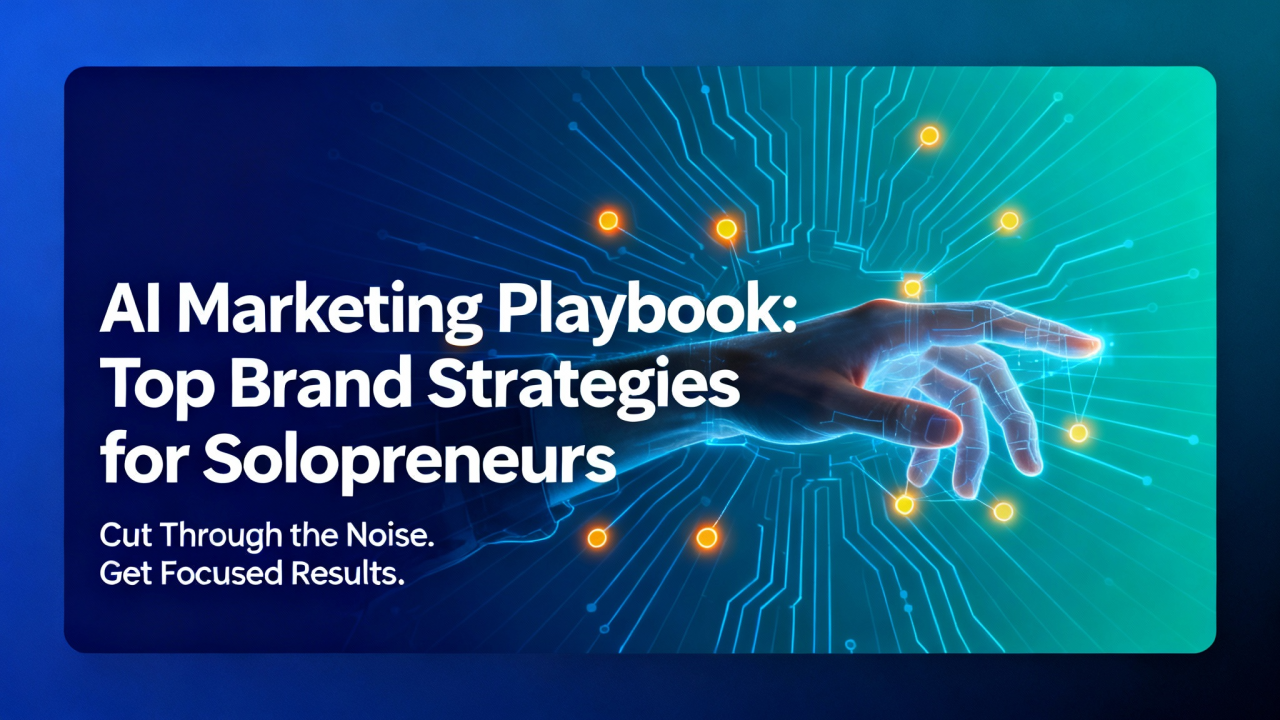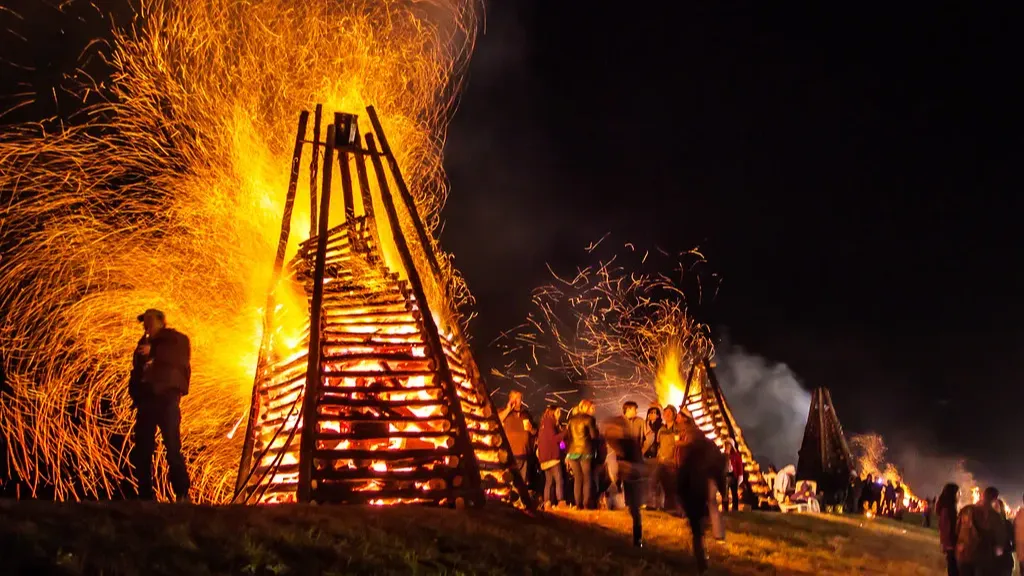AI + Marketing That Actually Works Today — a practical playbook for solopreneurs

AI isn’t a distant future — it’s the engine behind how top brands create content faster, personalize at scale, run smarter ads, and automate follow-up so they convert more customers with smaller teams.
This article cuts through the hype and gives a step-by-step, affordable plan you can use right now to build a brand, generate leads, and scale as a solopreneur.
Below you’ll find:
- The proven AI-driven strategies top brands are using (with real examples).
- A clear execution roadmap (what to do week-by-week).
- Affordable tools and setups that don’t require a marketing team.
- Measurement checks so you know where to double down.
What top brands are actually doing with AI (short version)
- Hyper-fast creative production — retailers are using generative AI to create product imagery and campaign assets in days not weeks, cutting costs and iteration time dramatically. Reuters
- AI innovation labs + data-first R&D — big consumer brands pair data teams with platforms (and cloud AI) to spin up internal tools that surface trends and speed product/marketing decisions. Vogue Business
- AI-driven segmentation & personalization — brands use ML to auto-generate customer segments and predict value/churn so messaging is timely and relevant. Klaviyo
- AI-assisted creative & copy — marketers use purpose-built AI copywriters to produce ad variations, landing pages, and social posts quickly for A/B testing. Social Media Dashboard
- No-code automation orchestration — solopreneurs and enterprises alike glue apps together with platforms like Zapier/Make to automate lead routing, follow-ups, and content distribution. Zapier
These moves add up: speed + personalization + automation = more conversions per marketing dollar.
The high-level strategy (4 pillars you must own)
- Audience & Data Foundation — know who converts, where they come from, and what actions matter (LTV, purchase events, email opens).
- Content Engine — build repeatable prompts, templates, and formats that produce content quickly (ads, emails, social, landing pages).
- Personalization & Orchestration — serve the right message to the right micro-segment at the right time using automation.
- Measure, learn, iterate — run fast experiments, measure a small set of metrics, and kill or scale assets quickly.
Week-by-week execution plan (0 → 12 weeks)
Week 0: Set baseline (1 day)
- Create a one-page marketing brief: target customer, single offer, conversion goal (book a call, buy, sign up).
- Install analytics: Google Analytics/GA4, Facebook Pixel/Meta Conversions, and a simple CRM (HubSpot free or Airtable). Capture UTM tags for ad traffic.
Week 1: Quick audience analysis (2–3 days)
- Pull last 6 months of interactions (sales, website, email). Identify top 2 customer profiles (persona A and B).
- Use simple RFM (recent, frequency, monetary) or a free CRM segment to find your best customers.
Week 2: Build your content engine (4–7 days)
- Create templates for:
- Use an AI writing assistant to generate initial drafts, then human-edit to match voice.
Practical: Save prompts and templates in a single Notion page or Google Doc.
Week 3–4: Small-scale testing (2 weeks)
- Run low-cost ads (Facebook/Instagram/META; or LinkedIn if B2B) using 3 ad variants per persona — small budget, focus on CTR and landing-page conversion.
- Drive traffic to a single focused landing page. Capture leads into your CRM.
Week 5–6: Automate follow-up + personalization
- Hook lead capture to an automation: new lead → tag by persona → send tailored email sequence + Slack notification to you.
- Use segmentation to send different messaging to high-intent leads (clicked pricing) vs low-intent (just visited blog).
Week 7–9: Scale content and personalization
- Use AI to produce 10–15 ad variations and 30 social posts from your templates. Prioritize the top performers from earlier tests.
- Add one personalization layer (e.g., dynamic product recommendations, first-name personalization, or content by segment).
Week 10–12: Measure, prune, and systematize
- Keep the top 20% ad/content that generate 80% of results. Pause the rest.
- Document playbooks: prompt library, ad formulas, email sequences. Clone workflows so new products/offers can be launched quickly.
Tactical playbook: concrete AI tactics that work (and how to execute them)
1) Produce high-quality content fast (the content engine)
What to do:
- Build prompt templates for each format (social, ads, emails, landing pages). Save & version them.
- Use AI to create 5–10 variations of the same message; A/B test.
Tools (affordable): ChatGPT / Writesonic / Copy.ai / Jasper — all have starter/free tiers or low monthly plans. Use the one that gives you the best output for your voice. Social Media Dashboard+1
Execution steps:
- Create a base prompt: product benefits, audience, tone, call to action.
- Generate 10 copies. Edit top 3 manually.
- Create 3 ad visuals (see image tools section).
- Run tests and track CTR → landing page conversion.
2) Use AI for segmentation & predictive targeting
What to do:
- Stop blasting everyone. Describe the audience in plain language and let a segmentation AI create groups (high-value, at-risk, likely repeat). Klaviyo
- Tools: Klaviyo (ecommerce), HubSpot (free CRM + AI features), Segment/Mixpanel for event tracking. Klaviyo
Execution steps:
- Connect your purchase and email data to Klaviyo or HubSpot.
- Use AI-driven segment builder (e.g., “create a segment likely to buy again in 30 days”).
- Build custom messaging for each segment and automate flows.
3) Generate images & visual assets with generative AI (fast, cheap creative)
What to do:
- Replace some photo shoots with AI-generated lifestyle images for ads, product variations, or quick mockups. Top retailers are doing this to speed campaigns. Reuters
- Tools: Canva (templates + AI), Midjourney, Stable Diffusion, DALL·E (for concept art). Many have low-cost subscriptions or pay-per-image options.
Execution steps:
- Define visual brief: product, setting, mood.
- Generate 6 variations; pick 2 and refine.
- Use those in A/B tests versus real photos.
4) Automate workflows & orchestration (no-code)
What to do:
- Automate lead routing, follow-up reminders, and content publishing so you don’t manually repeat tasks.
- Tools: Zapier, Make (Integromat), n8n (open source), HubSpot workflows. These allow you to connect forms, CRMs, email, Slack, calendars. Zapier
Execution steps:
- Create a “new lead” workflow: Web form → CRM → email sequence → Slack alert for hot leads.
- Build a weekly content publish workflow: Draft in Google Docs → Auto-publish to social + schedule in Hootsuite.
5) Ads optimization with AI (dynamic creative at scale)
What to do:
- Feed multiple copy and creative variations into ad platforms and let the platform’s learning choose winners. Create dynamic ads that swap images/headlines by segment.
- Tools: Facebook/Meta dynamic ads, Google Performance Max, Adobe Advertising, ad platforms that support dynamic creative.
Execution steps:
- Upload 10 creatives + 10 headlines → run for a 7–10 day learning window.
- Evaluate by CPA, not clicks. Pause high-CPA winners.




